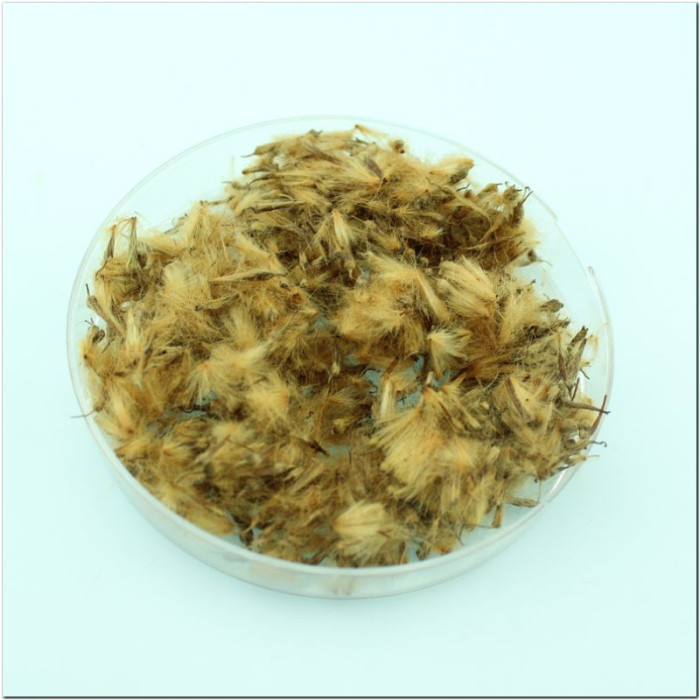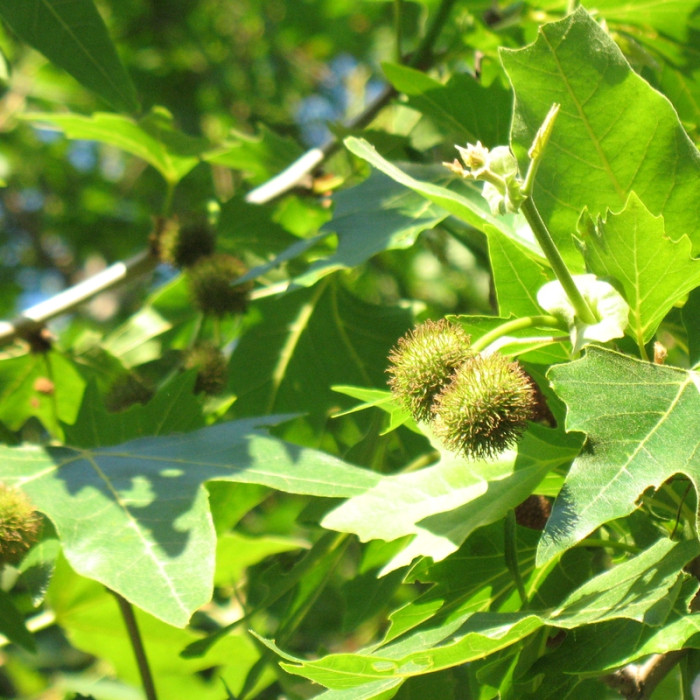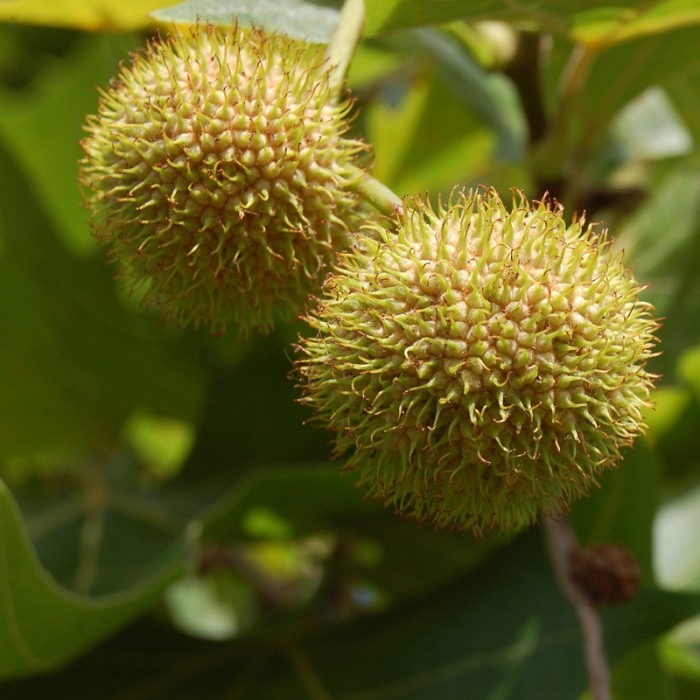Eastern Sycamore or Old World sycamore or Oriental plane / Platanus orientalis
Species of flowering plants from the genus Platanus of the family Platanaceae.
Oriental sycamore is usually a tree 25-30 meters high, with an uneven, knotty, most often reaching to the very top, powerful trunk up to 12 meters in diameter, usually hollow in old age, and low-lying wide, loose and sprawling crown. The branches are curved, depart from the trunk almost at a right angle, the lower ones hang down to the ground. The bark of the trunk is light gray or greenish-gray, falls off in large thin scales, which expose spots of a lighter inner layer of the bark, white or yellowish-gray.
The leaves are mostly five, rarely seven-lobed, and occasionally three-lobed on young shoots, 12-15 cm long, 15-18 cm wide, truncated or broadly wedge-shaped at the base, rarely broadly heart-shaped. Leaf lobes oblong, notched-large-toothed, with 2-5 teeth on each side, rarely almost entire, teeth shortly pointed, notches between lobes rounded, reaching the middle of the leaf or deeper. Young leaves on both sides are densely covered with white stellate hairs, later dark green above, often glossy, paler below, glabrous and pubescent only along the main veins and along their axils. Petioles are first white-tomentose, then glabrous, 5-7 cm long.
Fruit heads about 2.5 cm in diameter, bristly from long remaining columns, clearly arranged 2-7 on a common stem, lateral heads sessile or stalked.
The fruits are thickened towards the apex, pubescent over the entire surface with stiff, appressed hairs, with a conical apex, turning into a straight, bare style about 4 mm long.
Oriental plane tree grows well in strongly alkaline soils. Takes out smoke in the conditions of large cities.
Oriental plane tree is very fond of sunlight, good drainage and moisture. Growing in such conditions, the oriental plane tree is able to rise in just one year to a height of 1.5 - 2 meters. The tree is frost-resistant and easily tolerates seasonal temperature drops to -15C.
Immediately before sowing, the seeds are soaked for a day or two. If the soil for planting is hard, plant the plane tree in the spring; on light soils, it is recommended to plant them in the fall. In the latter case, the seeds are brought to a depth of half a meter.
In addition, it can be grown at home as an ordinary houseplant and, after spring-summer "hardening", planted in open ground. Many bonsai growers use this method.
Most suitable for single plantings in gardens, parks and squares, as well as for creating large shady alleys and street plantings.

No questions about this product, be the first and ask your question.


















